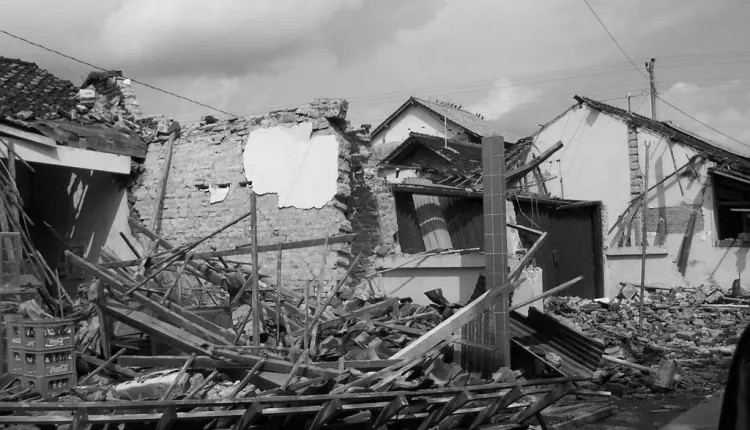Learning from the Jogja Earthquake of 27 May 2006
Education

Image of House Collapsed by the May 27 2006 Earthquake by EkaRockCIty
MKPI Education – Eighteen years ago, precisely on May 27 2006 at 05.53, an earthquake measuring M5.9 lasting less than 1 minute destroyed hundreds of thousands of houses in the Special Region of Jogjakarta and Klaten, Central Java. Studying the Jogja Earthquake of 27 May 2006, what lessons can be learned as preparation for facing the threat of the next earthquake?
The government report states that 5,760 people died, 29,277 people were seriously injured and 7,863 people were slightly injured. More than one million people have become refugees in temporary shelters. Physical losses were mainly experienced by community members who lost houses which collapsed/were heavily damaged or were uninhabitable, amounting to 175,671 units (Yogyakarta Special Region) and 104,084 units (Central Java region). Economic losses are estimated at around IDR 29.1 trillion.
Several eyewitnesses said that shortly before their house collapsed, they heard a roar followed by their well water being shaken until it gushed out onto the ground and some of the well water disappeared and was replaced with sand. This was different from the witness who was outside their house while in the rice field, who saw that the ground they were stepping on swayed so that his head became dizzy, he saw the undulating ground approaching him and he was thrown 1 meter away. According to his testimony, the ground was undulating like a roll of capet being shaken.

Yogyakarta Earthquake Center Point 27 May 2006 according to USGS
The large number of deaths, injuries and houses that collapsed to the ground caused mass panic. Panic continued because the issue of a potential tsunami that would occur 4 hours later emerged, the people of Yogya were panicked and in chaos. People who were injured ran around making it look pathetic. This happens because of their lack of knowledge about earthquakes and tsunamis. Officials and academics tried to prevent them from being afraid but were ignored.
An important lesson from the Jogja earthquake is that earthquakes do not kill but collapsed buildings can.
Hundreds of thousands of houses collapsed to the ground, killing most of the people inside and causing permanent disability. However, there are also many houses that are still intact and the people inside them are saved. Most of the houses that collapsed were brick houses without reinforcement, while the houses that did not collapse housed walls with a structure of reinforcement and beams.
The existence of the active Opak Fault route teaches us the importance of knowing the active fault lines in an area. Cities that are crossed by active faults are advised to improve their mapping of earthquake threats and their impacts so that building standards can be prepared in each earthquake-prone zone.
Author: Dr. Ir. Amien Widodo, M.Sc.
Watch the full explanation regarding the May 27 2006 Jogja Earthquake here
Latest News
-
MKPI ITS and JSCE Discussion: Reverse Zoning to Enhance Disaster Resilience
MKPI Education – On November 18, 2024, Institut Teknologi Sepuluh Nopember (ITS) Surabaya, together with the East Java Regional
-
Mount Marapi, Galogo & Lava, and Tips for Dealing with Them
MKPI Education – The National Disaster Management Agency (BNPB) announced that the number of victims who died due to
-
Learning from the Jogja Earthquake of 27 May 2006
MKPI Education – Eighteen years ago, precisely on May 27 2006 at 05.53, an earthquake measuring M5.9 lasting less





